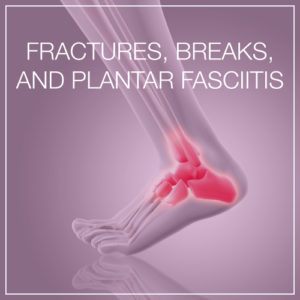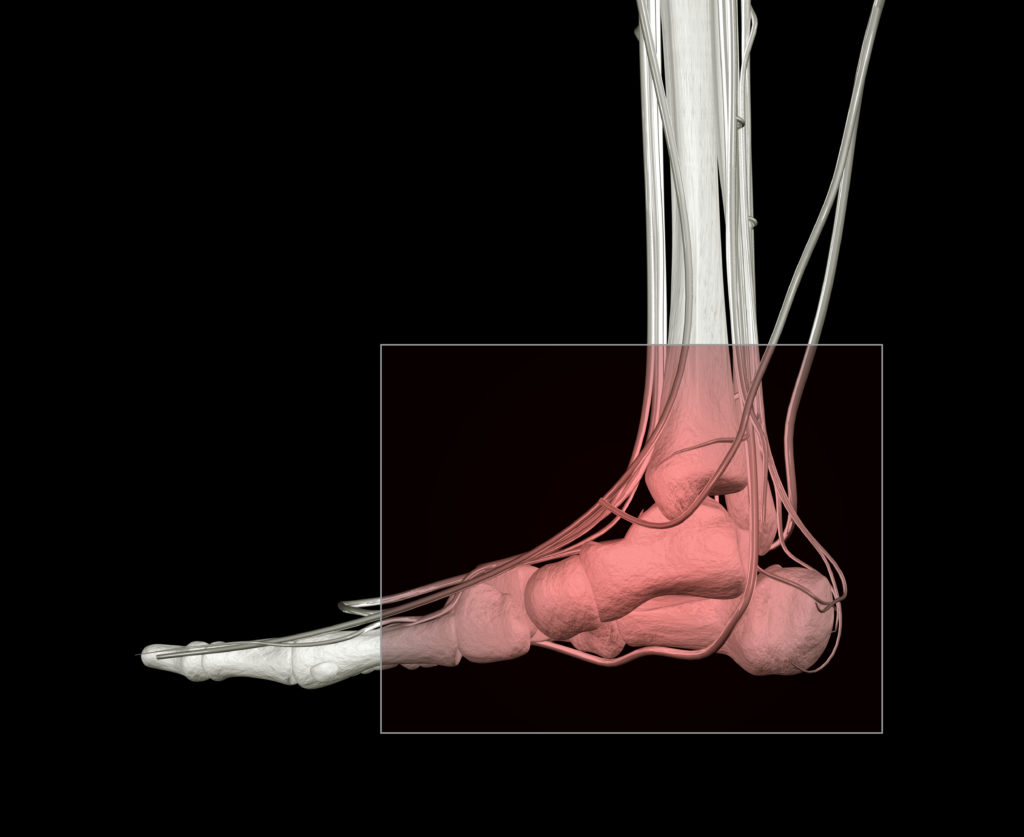 A broken foot or traumatic foot injury means pain, restricted mobility, plenty of downtime, and sometimes even significant medical interventions.
A broken foot or traumatic foot injury means pain, restricted mobility, plenty of downtime, and sometimes even significant medical interventions.
And as if the fallout from a stress fracture or break wasn’t bad enough, this type of foot trauma is also closely linked with the development of plantar fasciitis.
Here’s what you should know about the link between a broken foot or ankle and plantar fasciitis:
Click here to browse guaranteed plantar fasciitis treatments!
The Connection Between Plantar Fasciitis and Breaks or Fractures
The reports of plantar fasciitis beginning after a break or stress fracture are numerous. But why? Many podiatrists point to ankle instability as one of the primary reasons individuals are vulnerable to plantar fasciitis after sustaining traumatic foot injury:
Dr. Baravarian, the Chief of Podiatric Foot and Ankle Surgery at the Santa Monica UCLA Medical Center and Orthopedic Hospital says, “To compensate for an unstable ankle, the increased activation of the peroneal tendons places a pronatory effect on the foot, causing increased strain on the plantar fascia and resulting in plantar fasciitis symptoms.”
In other words, when one part of the foot is compromised, other areas of the foot (muscles, tendons, and ligaments) take up the slack, leading to gait changes like pronation or simply additional strain on other parts of the foot. Even when a bone or fracture has completely healed, the rest and downtime during the healing process can result in muscles and ligaments that are tighter, weaker–and less able to support the foot arch as usual.

Plantar fasciitis may also develop in the non-injured foot during the healing process, as the healthy foot over-compensates. It’s critically important to adequately rest the non-injured foot during your recovery as well as keeping an eye out for signs of plantar fasciitis, including pain, redness, swelling, inflammation, and stiffness, especially in the morning.
Preventing Plantar Fasciitis in Cases of Traumatic Foot Injury
While most people who suffer a stress fracture, foot or ankle break, or traumatic foot injury take special care of the injured foot during the healing process, it’s important to understand that the healthy foot is at risk for injury as well.
Follow a daily regimen of adequate rest, stretching the healthy foot, icing as any redness or swelling appears, and wearing orthotic inserts for additional support.
Special care is also needed post-recovery to avoid a secondary trauma of plantar fasciitis.
Ramp up to physical activity slowly, even after you get the all-clear from your doctor and the boot, brace, or cast has been removed. While your foot or ankle may feel as good as new (if a bit weaker than before), now is the time that plantar fasciitis may sneak in to wreak havoc on your arch. During your recovery, and while your foot was immobilized, the muscles in your foot have atrophied, meaning that they are less able to support your foot and arch.

Prioritizing a daily foot, heel, and ankle stretches can make a world of difference in improving muscle and ligament flexibility and strength, both of which will help support your arch properly and reduce the amount of compensation for your weakened muscles and ligaments.
Wearing orthotic inserts is another terrific way to support your arch while your muscles and ligaments regain flexibility and strength. The specialized orthotics, which can be easily slipped into almost any pair of shoes, add both cushioning, support, and targeted acupressure to keep plantar fasciitis at bay.
Special Considerations in Treating Plantar Fasciitis Alongside Breaks or Stress Fractures
If you do notice symptoms of the onset of plantar fasciitis in your healthy foot while you are dealing with a broken foot or stress fracture, be sure to make your doctor aware of the new development to address any potential complications in your unique case.
Your doctor may recommend a different type of aide in helping you move about (for instance, a rolling knee scooter instead of crutches, to reduce the impact to your healthy foot while you move about during the day.
In addition to stretching, icing, and using NSAIDs as needed for your healthy foot, you may also consider wearing a night splint or compression socks at night to further stretch and strengthen your healthy foot.
While it can be easy to devote all your attention to the foot that has undergone the traumatic injury or break, it’s critical to adjust your mindset to adequately resting and caring for both feet during your recovery and post-recovery.
Healing from your broken foot or stress fracture should be your first priority if you’ve undergone a traumatic foot injury. But understanding the connection between a broken foot and plantar fasciitis and knowing how to prevent and treat the early warning signs of this condition will help ensure that you recover and as quickly and smoothly as possible!




I have excruciating pain in my heels. And when I can get someone to squeeze the sides and rub deep in a few spots I come unglued. They hurt so bad. Nothing helps but I like the massage the best. Had surgery theraphy. They say it’s from my back they way I walk who knows I give up.
Do you have back pain? I believe that past injuries impact the alignment of the skeleton and the muscles and ligaments compensate for that. I had an adults motorbike fall on me when I was 5. All the large bones in one leg broke. After healing I started to develop pain in the arch tendons under my feet. I was never right but orthotics were helpful. In my teens I had a high hamstring tear at its origin in the hip. I never had a diagnosis and now I am in pain from my lower back right down to my feet with severe inflammation and sacroilliitis. I believe that if someone is telling you it’s in your back it probably is because the influence our spine has on other parts of the body is quite amazing. See a Chiro Physio get catscan/ MRI and think about impacts past injuries maybe having on your current situation.
Broke my ankle back in the spring and then sprained it again in the summer a few months later. Had previously had plantar fasciitis surgery about 8 years ago and was cured. Since the break, it’s back again. Hurting in the same place. 🙁 I had a feeling this had something to do with it.